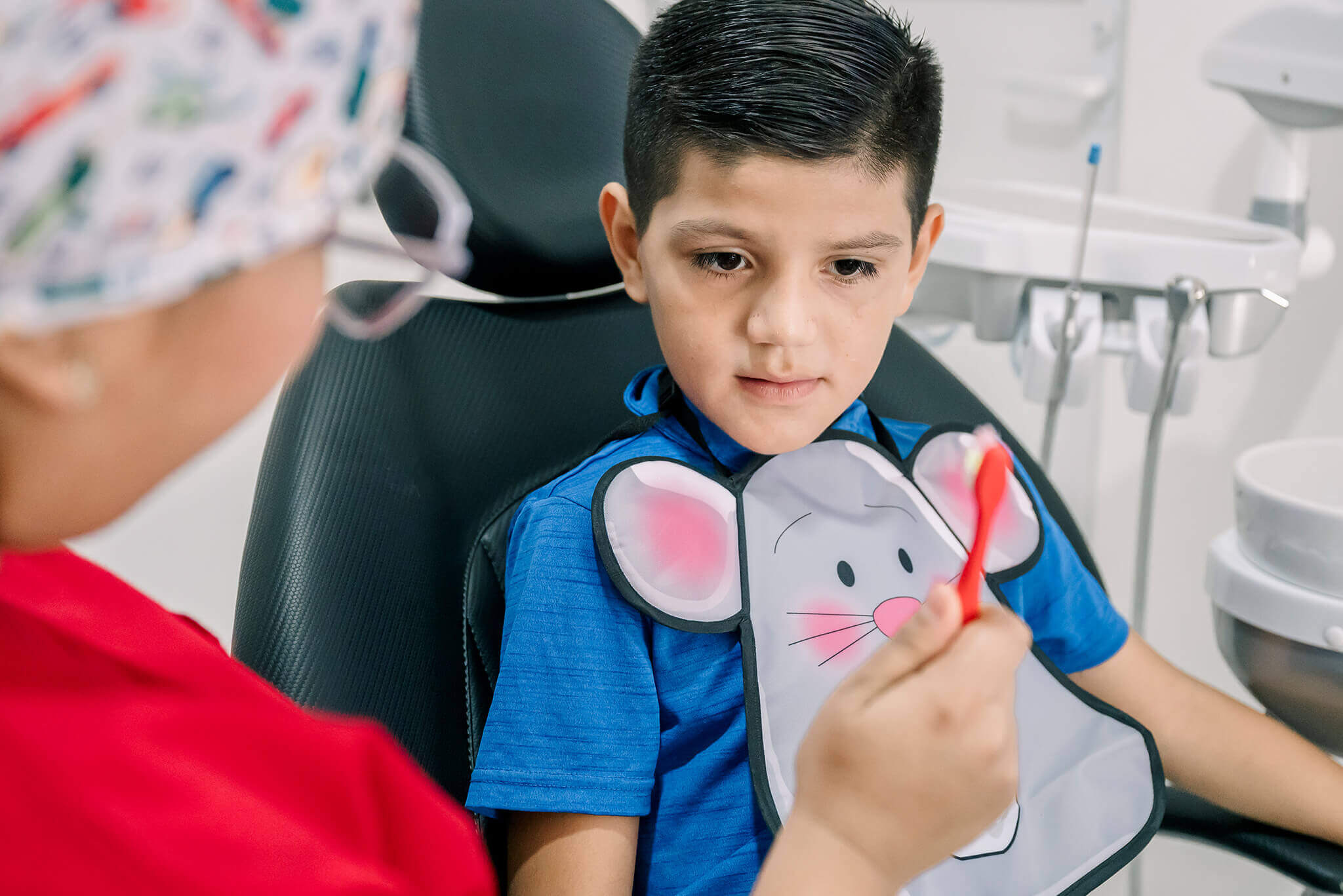
Complete Post-Op Guide for Pediatric Dental Crown Placements
When your child gets a dental crown, the hardest part is over, but the most important part is just beginning.
Proper post-op care for this common procedure is what ensures the new crown does its job: protecting the tooth, preventing future problems, and keeping your little one smiling comfortably.
Whether it’s their first crown or one of several, here’s what you need to know to make recovery smooth and stress-free.
Post-Op Care Matters More Than May You Think.
A well-placed crown can last for years, but that’s only if it’s cared for properly. Post-op care is as much about ensuring long-term success as it is providing about comfort. The first few days after placement gives the crown time to “settle,” and how your child eats, brushes, and plays during that period can make all the difference.
More than half of children experience mild discomfort within 24 hours after dental rehabilitation under anesthesia, but symptoms typically resolve within a few days when aftercare instructions are followed correctly, according to recent research.
Helping Your Kid Heal: What to Do (and What Not to Do)
While every child’s post-op experience will look slightly different, the general guidance for a proper recovery is the same.
Care should begin the moment your child is discharged, beginning here:
Immediately After the Appointment
Protect from biting and numbness. The mouth may stay numb for 2–4 hours. Help your child avoid chewing, eating, or biting their cheeks, tongue, or lips until the numbness wears off.
Expect light bleeding. Slight oozing or pink-tinged saliva is normal. Replace gauze as needed and call your dentist if bleeding continues beyond two hours.
Take it easy. Skip roughhousing, running, or sports for the rest of the day. Their mouth—and body—need rest.
Managing Pain or Swelling
Mild soreness or swelling is common in the first day or two. Over-the-counter pain relief, like children’s acetaminophen or ibuprofen, can help manage discomfort (always follow your dentist’s or pediatrician’s dosage instructions). A cool compress on the cheek can also bring relief.
If your child’s pain worsens or persists beyond 48 hours, contact your dental office. Lingering pain may signal that an adjustment is needed.
Choosing the Right Foods
Soft, easy-to-chew foods are best for the first 24–48 hours. Think mashed potatoes, pasta, applesauce, scrambled eggs, yogurt, smoothies, and the like.
Avoid anything hard, sticky, chewy, or crunchy, such as gum, caramels, nuts, popcorn, or hard candy. These can dislodge or crack a new crown. A good rule of thumb: if it’s tough for you to chew, it’s probably too tough on the crown.
Finally, avoid extremely hot or cold foods right after treatment that might trigger temperature sensitivities. This should also fade within a few days.
Keeping Things Clean
Good oral hygiene and dental habits play a major role in how well the mouth heals. Encourage your child to brush as usual, but gently around the treated tooth. A soft-bristled brush works best, and light pressure will prevent irritation near the gumline. If the gums are sore, rinsing with warm salt water (a half teaspoon of salt dissolved in a cup of warm water) once or twice a day can help soothe inflammation.
Flossing should continue too, just with a bit of extra care. Slide the floss out rather than snapping it upward to avoid disturbing the crown.
Within a few days, brushing and flossing should feel completely normal again. The most important thing is consistency: keeping the mouth clean helps prevent plaque buildup around the crown and promotes faster healing.
What to Expect During Recovery
- Slight soreness or gum irritation for a few days
- Mild temperature sensitivity
- The crown may feel “high” or different at first — kids usually adapt within a few days
- A temporary dislike of brushing near the treated tooth
Most symptoms fade within 48–72 hours. After that, your child should feel completely back to normal.

While complications are rare, a few warning signs are worth watching for. Call your pediatric dentist if you notice any of the following:
- Pain that lasts longer than two days or seems to get worse
- Swelling, redness, or tenderness around the crowned tooth
- The crown feels loose or comes off
- Persistent bleeding or discharge
- Fever, fatigue, or general malaise
- Bad taste or odor from the area
These can be signs of infection or an ill-fitting crown, both of which your dentist can address quickly if caught early.
Setting Kids Up for Long-Term Success
A crown’s purpose is to restore and protect. With a few days of mindful care, that crown can last until the natural tooth falls out on schedule.
Above all, it’s important to encourage healthy habits. Brushing twice daily, visiting the dentist regularly, and steering clear of sticky treats can stress crowns and lead to unwanted complications.
And remember: not all crowns are created equal. High-quality materials, like the zirconia used in Cheng Crowns, are designed to withstand years of chewing, laughing, and mischief, all while looking completely natural in every smile.
For more tips on pediatric dental care, crown maintenance, and choosing the right restoration for your patients, explore the educational resources at chengcrowns.com.